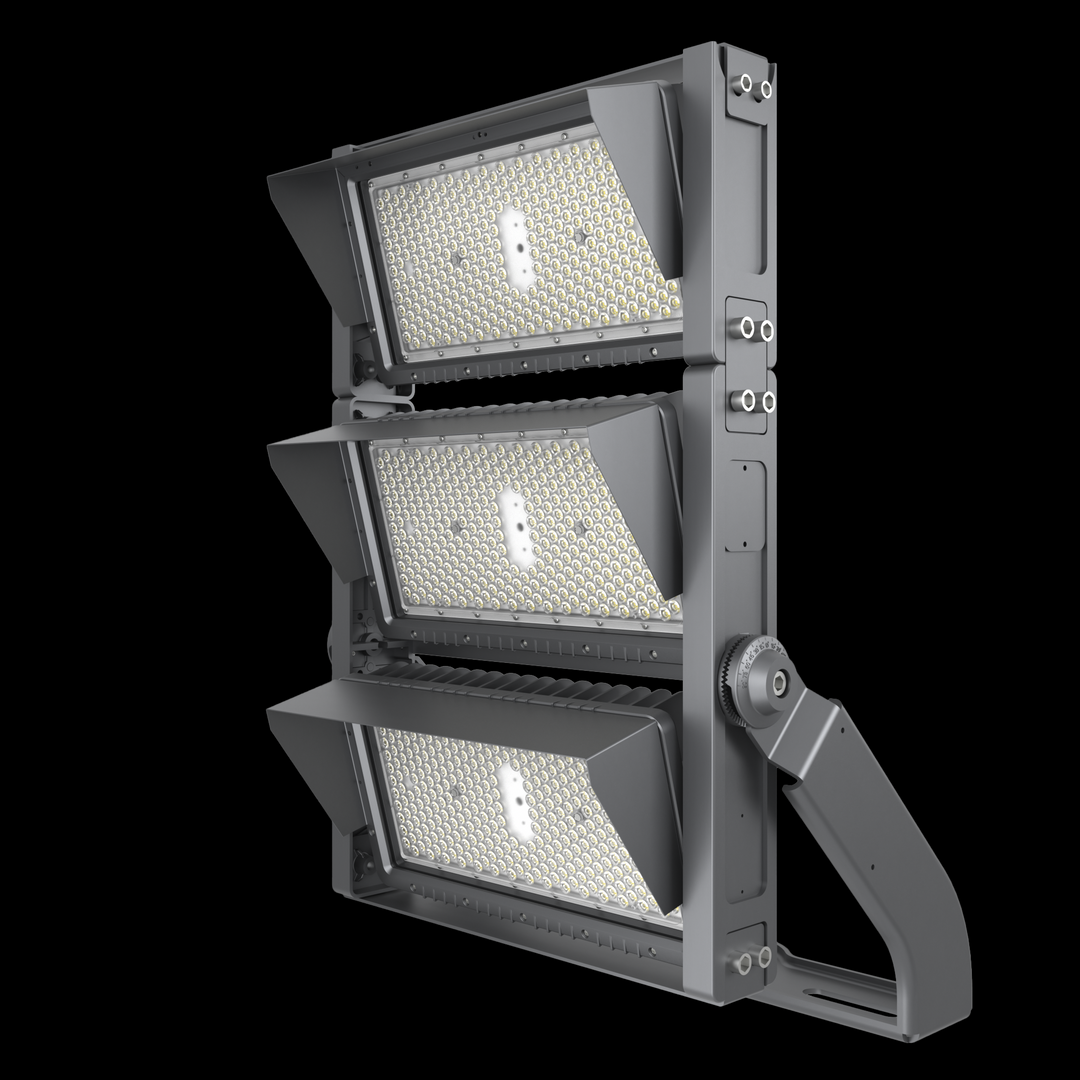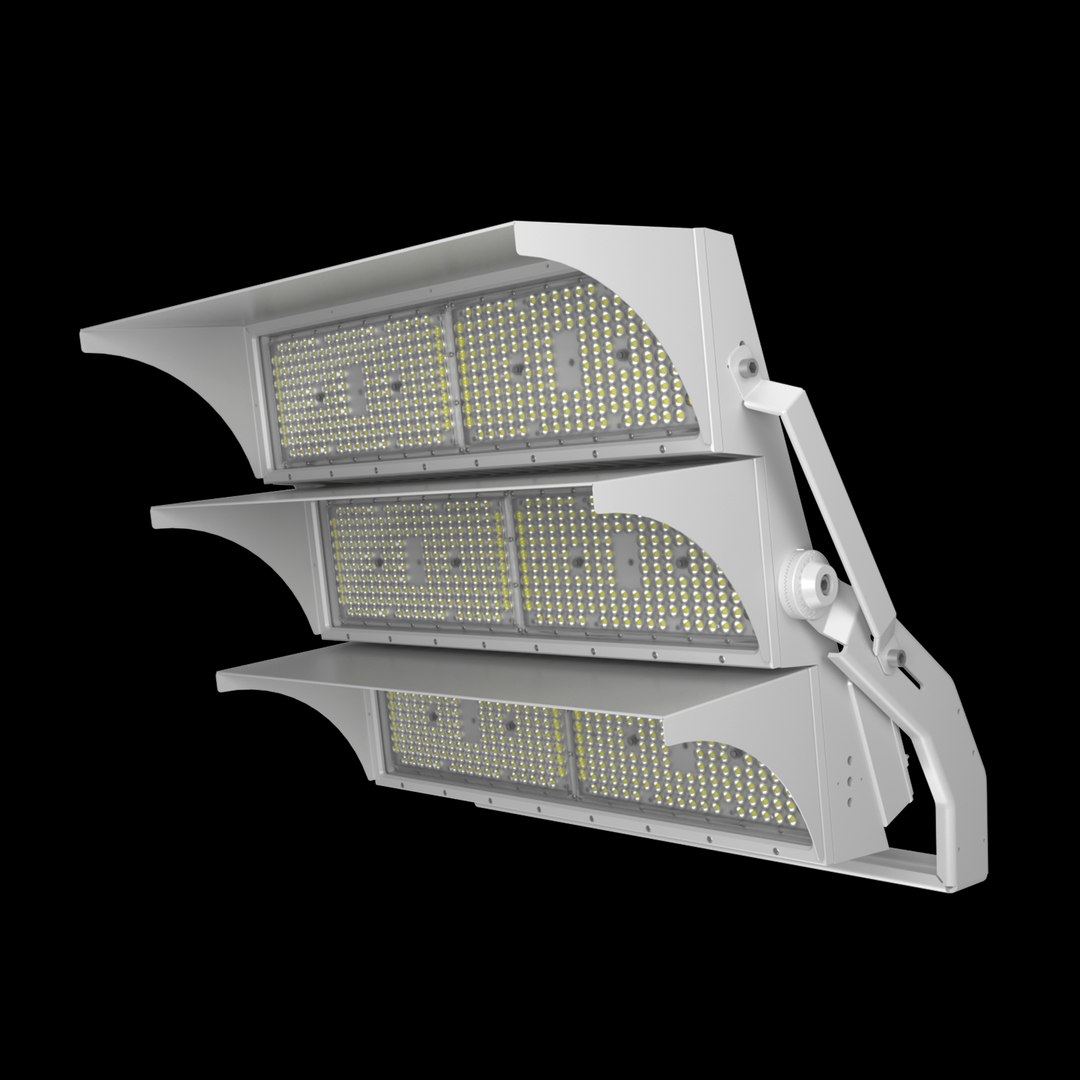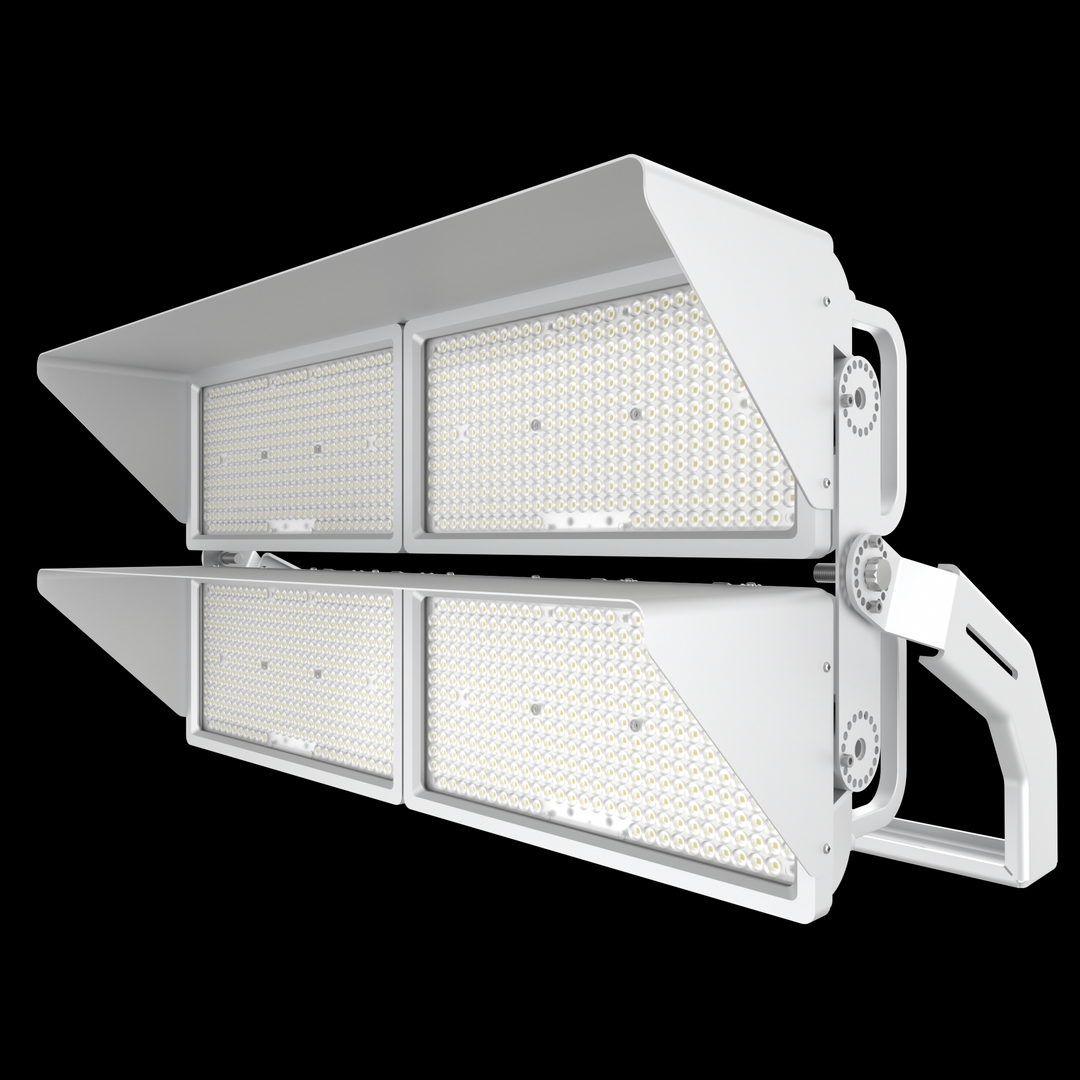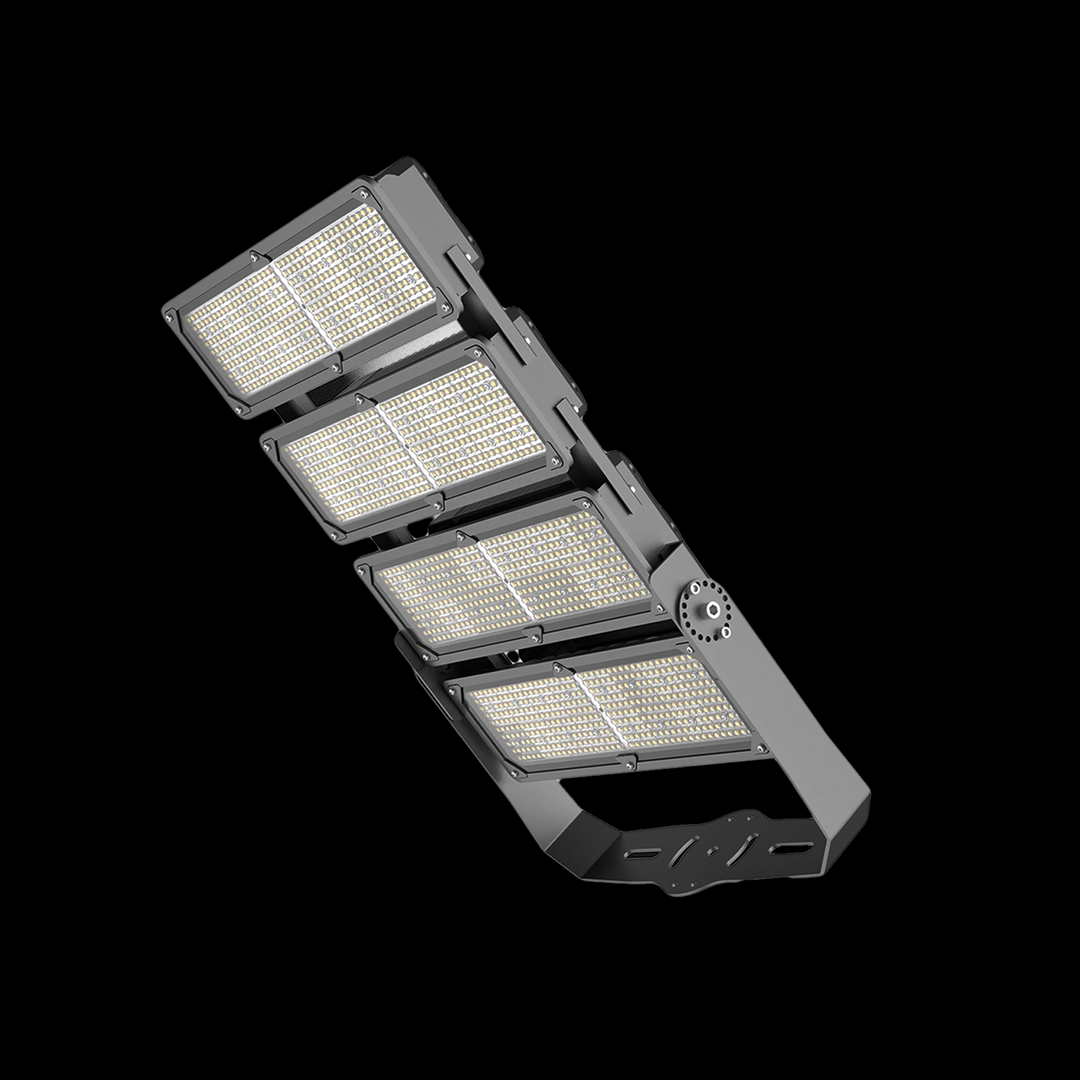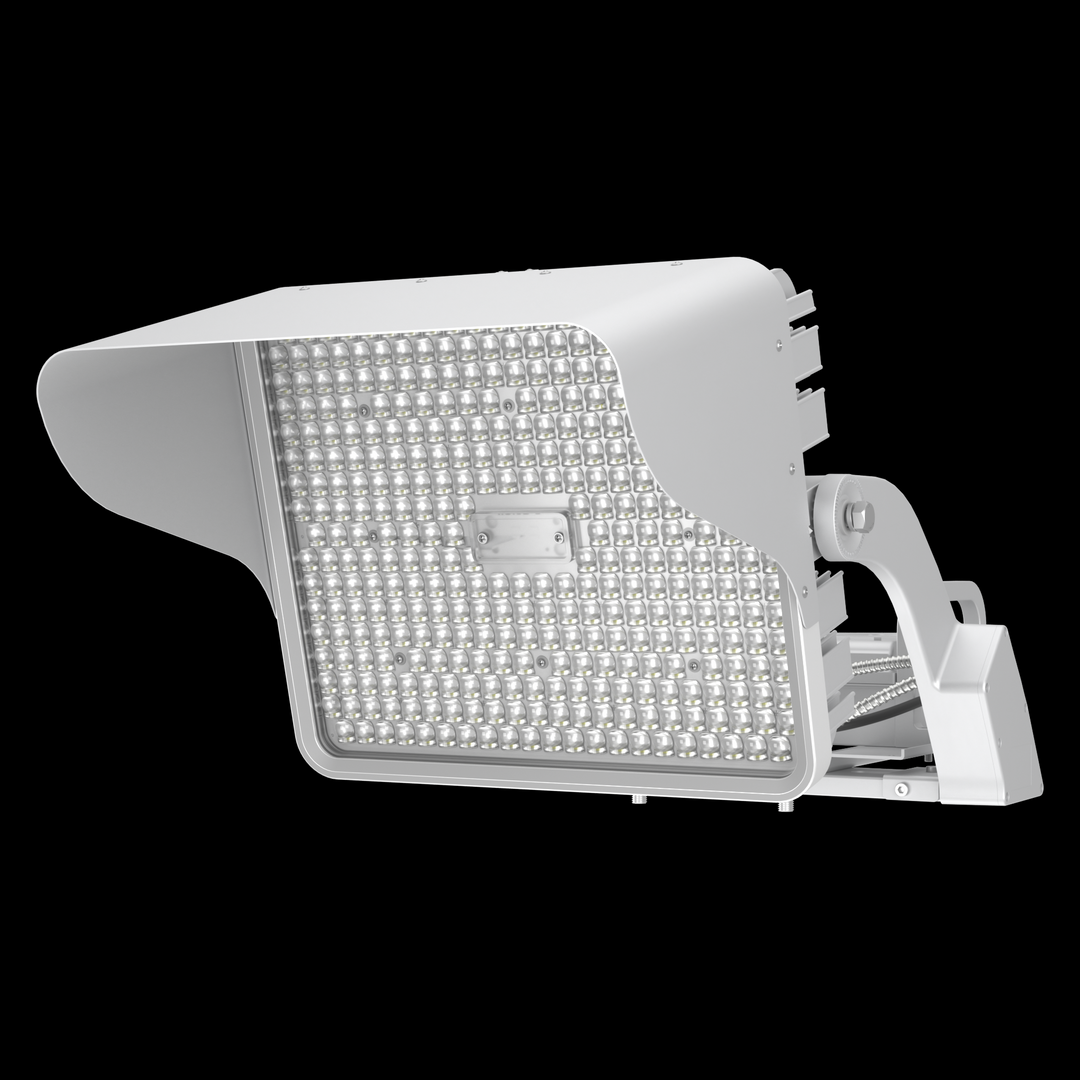#Commercial LED Fixtures ·
#Industrial Lighting Guide ·
#LED High Bay Types ·
#UFO vs Linear LED High Bay ·
#Warehouse Lighting Selection ·
Understanding the Difference Between UFO and Linear LED High Bay Lights
Introduction: Why the Right LED High Bay Shape Matters
When upgrading to LED high bay lights for commercial or industrial spaces, two designs dominate the market: UFO and linear. At first glance, they might seem like just different shapes—but their structural differences translate to major variations in performance, light distribution, and suitability for specific environments. Choosing the wrong one can lead to uneven lighting, wasted energy, or frequent maintenance headaches. For example, a warehouse with narrow aisles might struggle with dark spots if fitted with UFO fixtures, while a large open factory floor could feel dim with linear lights spaced incorrectly. This guide breaks down the core differences between UFO and linear LED high bays, from design and light output to installation and cost, helping you make an informed decision that aligns with your space’s unique needs.
1. Design & Structural Differences
The most obvious distinction lies in their physical form, which directly impacts how they fit and function in a space:
-
UFO LED High Bay Lights:Named for their round, disc-like shape (resembling a UFO), these fixtures are compact and self-contained. They typically range from 12-24 inches in diameter and 4-8 inches in depth, with a single housing that integrates the LED chips, driver, and heat sink. The circular design allows for a centralized heat dissipation system—often a radial heat sink that spreads heat evenly, preventing hotspots. Their low profile makes them ideal for spaces with limited ceiling clearance, as they hang close to the ceiling without protruding too far.
-
Linear LED High Bay Lights:Long, rectangular fixtures that come in standard lengths (4ft, 6ft, 8ft) or custom sizes. They have an elongated housing with LED chips arranged in a straight line, flanked by heat sinks along the sides. Unlike UFO models, linear high bays can be surface-mounted, suspended, or even mounted on walls (for indirect lighting). Their slim profile (usually 2-4 inches in depth) makes them versatile, but their length requires more planning for installation spacing—especially in tight spaces.
2. Light Distribution & Beam Angle
Light distribution is where UFO and linear high bays differ most dramatically, making each better suited for specific space layouts:
-
UFO LED High Bays:Deliver 360-degree omnidirectional light (or wide beam angles of 120°-150°), spreading light evenly in all directions. This makes them perfect for open, square-shaped spaces like manufacturing floors, gymnasiums, or large warehouses with no permanent partitions. The wide coverage reduces the number of fixtures needed—for example, a 200W UFO high bay (30,000 lumens) can cover 500-800 square feet, depending on ceiling height. However, their wide beam angle can lead to light waste in narrow spaces, as light spills onto walls or unused areas.
-
Linear LED High Bays:Produce directional light with narrow to medium beam angles (60°-120°), focusing light along their length. This makes them ideal for long, narrow spaces like retail aisles, factory production lines, or warehouse corridors with high racks. The linear design ensures light is directed downward onto the target area (e.g., shelf surfaces or workstations) rather than spilling sideways. For example, a 120W linear high bay (16,800 lumens) can efficiently cover a 10ft-wide aisle, eliminating dark spots between shelves. They also pair well with reflectors to further concentrate light for precision tasks.
3. Performance & Efficiency
While both designs offer energy efficiency compared to traditional lighting, there are subtle performance differences to note:
-
Lumen Output & Efficacy:UFO high bays often have higher wattage options (100W-300W) and can reach up to 45,000 lumens, making them better for high-ceiling spaces (25ft+). Linear models typically range from 60W-200W, with lumen outputs up to 28,000 lumens—ideal for 15-25ft ceilings. In terms of efficacy (lumens per watt), both can reach 150-180 LM/W, but linear fixtures may have a slight edge in narrow spaces due to targeted light distribution, reducing the need for extra fixtures.
-
Heat Dissipation:UFO high bays excel at heat dissipation thanks to their radial heat sinks, which have a larger surface area relative to their size. This allows them to handle higher wattages without overheating, extending lifespan to 50,000-100,000 hours. Linear high bays use longitudinal heat sinks along their length, which are effective but require proper spacing to avoid heat buildup—installing them too close together can reduce performance over time.
-
Glare Control:Linear high bays often come with diffused lenses or frosted covers to reduce glare, making them better for spaces where workers are looking up frequently (e.g., assembly lines or retail checkout areas). UFO models can produce more glare if not fitted with anti-glare accessories, though newer designs include frosted optics to mitigate this.
4. Installation & Maintenance
Installation complexity and long-term maintenance needs vary between the two designs:
-
UFO LED High Bays:Installation is straightforward—most come with suspension chains or hooks, so you simply mount a ceiling bracket and hang the fixture. Their compact size makes them easy to handle, even in tight spaces. Maintenance is minimal: since all components are contained in one housing, there’s less to inspect. However, if the driver fails, you may need to replace the entire fixture (unless it has a replaceable driver).
-
Linear LED High Bays:Installation requires more planning due to their length. Suspended linear fixtures need multiple ceiling mounts to prevent sagging, while surface-mounted models require precise alignment. For long rows (e.g., 10+ fixtures), you may need to daisy-chain wiring, which adds complexity. On the plus side, many linear fixtures have modular designs—if one section fails, you can replace just that part instead of the whole fixture, reducing maintenance costs.
5. Applicable scenario: Which Is Right for Your Space?
The best choice depends on your space’s layout, ceiling height, and lighting needs. Here’s a breakdown of ideal applications:
UFO LED High Bays Are Best For:
-
Open industrial spaces (factories, foundries)
-
Gymnasiums and sports arenas
-
Large warehouses with 25ft+ ceilings
-
Event venues and exhibition halls
-
Retail spaces with open floor plans (e.g., big-box stores)
Linear LED High Bays Are Best For:
-
Narrow warehouse aisles with high racks
-
Retail aisles and stockrooms
-
Factory production lines and assembly areas
-
Cold storage facilities (slim design fits between cooling units)
-
Office mezzanines and high-ceiling commercial lobbies
6. Cost Comparison: Upfront vs. Long-Term
Cost is a key consideration, and both designs have trade-offs:
-
UFO LED High Bays:Higher upfront cost for high-wattage models (e.g., $150-$300 for 150W-250W). However, their wide coverage means you need fewer fixtures—for a 10,000 sq ft warehouse, you might need 20-25 UFO fixtures instead of 30-35 linear ones, offsetting the higher per-unit cost.
-
Linear LED High Bays: Lower upfront cost per unit (e.g., $80-$180 for 80W-160W). But since they cover less area, you need more fixtures for large spaces. However, their modular design reduces maintenance costs over time—replacing a 2ft section of a linear fixture costs $20-$40, vs. $150-$300 for a new UFO fixture if it fails.
7. Real-World Case Studies
See how businesses benefited from choosing the right design:
-
Case 1: Automotive Factory (UFO High Bays):A 50,000 sq ft factory with 30ft ceilings replaced 100 metal halide fixtures with 200W UFO LED high bays. The wide light distribution eliminated dark spots on the assembly line, and energy costs dropped 65%. Maintenance visits fell from 15/year to 2/year due to the fixtures’ long lifespan.
-
Case 2: Retail Warehouse (Linear High Bays):A 20,000 sq ft retail warehouse with 18ft ceilings and narrow aisles installed 40 120W linear LED high bays. The targeted light distribution brightened shelf surfaces by 40%, reducing order-picking errors by 25%. The daisy-chain wiring simplified installation, and modular design allowed replacing a faulty section without downtime.
Conclusion: Match the Design to Your Space’s Needs
UFO and linear LED high bays are both excellent lighting solutions—but they’re not interchangeable. UFO models shine in open, high-ceiling spaces where wide, uniform light is needed, while linear fixtures excel in narrow, long spaces where targeted light distribution is critical. When choosing, consider your space’s layout (open vs. narrow), ceiling height (15ft+ vs. 25ft+), and lighting goals (uniform coverage vs. targeted task lighting). Don’t forget to factor in installation complexity and long-term maintenance costs—what saves money upfront might cost more down the line. By understanding these key differences, you’ll select a fixture that not only brightens your space but also boosts efficiency, reduces costs, and meets your operational needs for years to come.


